Estimation of GCV, PCV, heritability and genetic gain for yield and its related components in sorghum [Sorghum bicolor (l.) Moench]
Bạn đang xem bản rút gọn của tài liệu. Xem và tải ngay bản đầy đủ của tài liệu tại đây (274.31 KB, 10 trang )
Int.J.Curr.Microbiol.App.Sci (2017) 6(5): 1015-1024
International Journal of Current Microbiology and Applied Sciences
ISSN: 2319-7706 Volume 6 Number 5 (2017) pp. 1015-1024
Journal homepage:
Original Research Article
/>
Estimation of GCV, PCV, Heritability and Genetic Gain for Yield and its
Related Components in Sorghum [Sorghum bicolor (l.) Moench]
V.K. Bhagasara1, B.R. Ranwah1, B.L. Meena2* and Rumana Khan1
1
Department of Plant Breeding and Genetics, RCA, MPUAT, Udaipur -313001 (Raj), India
ICAR Research Complex for NEH Region, Tripura Centre, Lembucherra – 799210, India
2
*Corresponding author
ABSTRACT
Keywords
GCV, PCV,
Heritability and
Genetic Gain,
Sorghum bicolor.
Article Info
Accepted:
12 April 2017
Available Online:
10 May 2017
The present investigation entitled was carried out with 1700 germplasm lines along with 4
checks i.e. CSV17, CSV20, CSV27 and CSV21F provided by National Bureau of Plant
Genetic Resources (NBPGR) through ICAR- Indian Institute of Millet Research (IIMR)
Hyderabad. The experiment was laid out in augmented RBD with 60 replications during
Kharif 2015 at Instructional Farm, Rajasthan College of Agriculture, Udaipur. The
populations were employed for the assessment of genetic variability, heritability and
genetic gain and observations were recorded for nine quantitative characters viz., days to
50 per cent flowering, plant height (cm), number of leaves, leaf length (cm),
leaf width
(cm), panicle length (cm), panicle width (cm), 100- seed weight (g) and grain yield per
panicle ( g ) on five competitive plants selected at random for each germplasm lines except
early vigour and days to 50 percent flowering which were recorded on whole plot basis.
Availability of genotypes in different replication at the time of observations was not
conform on account of germinations and shoot fly dead hearts therefore, data were
analysed in augmented CRD. Analysis of variance revealed significant difference between
genotypes for nine quantitative characters. Mean square due to germplasm was significant
for all the characters. CSV17 was the best check for days to 50 percent flowering. CSV27
was the best check for leaf length, leaf width, panicle length and grain yield per panicle.
CSV21F was the best check for panicle width, plant height and number of leaves.GCV,
PCV and genetic gain were high for grain yield per panicle and heritability for 100-seed
weight.
Introduction
Sorghum bicolor (L.) Moench (2n = 20) is
one of the most important crop in the world
because of its adaptation to a wide range of
ecological conditions, suitability for low input
cultivation and diverse uses (Doggett 1988 a).
Sorghum belongs to family Poaceae and tribe
Andropogoneae (Harlan & de Wet, 1972).
Worldwide it is cultivated on 42.64 million ha
with a production of 67.57 million tones in
the year 2014-15 (Anonymous 2015a).
The crop is widely grown for food, feed,
fodder, forage and fuel in the semi-arid
tropics (SAT) of Asia, Africa, America and
Australia. In India, sorghum is having 6.00 m
ha area, 5.50 mt production and 917 kg/ha
productivity in the year 2014-15 (Anonymous
2015b). The major sorghum growing states in
our country are Maharashtra, Karnataka,
Rajasthan, Madhya Pradesh, Andhra Pradesh,
Tamil Nadu, Uttar Pradesh and Gujarat. In
1015
Int.J.Curr.Microbiol.App.Sci (2017) 6(5): 1015-1024
Rajasthan, 6.61 lac ha area is under
cultivation and production is 5.05 lac tones
with 763 kg per ha productivity in the year
2014-15
(Anonymous
2015c).
Major
emphasis of farmers on fodder causes low
grain productivity in this crop. Nutritional
value per 100 g of grain is 1,418 kJ (339 kcal)
energy, 74.63 g carbohydrates, 6.3 g dietary
fiber, 3.30 g fat and 11.30 g protein.
In view of the above facts, an experiment
entitled “Assessment of GCV, PCV,
Heritability and Genetic Gain for yield and
other quantitative characters in sorghum
[sorghum bicolor (l.) Moench]” was plan in
augmented RBD and conducted during Kharif
2015 at Instructional Farm, Rajasthan College
of Agriculture, Udaipur to study the
variability parameters.
Before planning any breeding programme, the
assessment of genetic variability in
germplasm
and
relationship
between
characters are necessary step. Genetic
improvement for quantitative and qualitative
traits depends on the nature and amount of
variability present in the genetic stock, if
desirable traits having high heritability more
are the chances of improvement through
selection. Indian sorghum possesses wide
range of genetic variability. The present study
is based on nine quantitative characters
majored on 1700 germplasm lines and four
checks. Information on the variability was
majored by genotypic coefficient of variation
(GCV), phenotypic coefficient of variation
(PCV), heritability and genetic gain for
individual quantitative characters and through
equilibrium distance over the characters.
Materials and Methods
Elimination of heterogeneity in one direction
is possible in augmented randomized block
designs (augmented RBD). Federer (1956 a,
1961 b) gave the analysis, randomization
procedure and construction of this design by
adding the new treatments to the blocks of
RBD for evaluation of large number of
germplasm. The analysis of augmented
designs can be easily carried out by making
use of the control treatments which are
appearing in every block to compare the test
treatments against control treatments. Even if
control treatments are missing in own or other
block data can be analysed in augmented
CRD.
The experimental material consists of 1700
germplasm lines of sorghum (given in
Appendix-II) along with four checks i.e.
CSV17, CSV20, CSV27 and CSV21F
provided by National Bureau of Plant Genetic
Resources (NBPGR) through ICAR- Indian
Institute of Millet Research (IIMR),
Hyderabad. The experimental material was
planted in augmented RBD with 60
replications at. Inter and intra row spacing
was 45 and 15 cm, respectively. Each
genotype was grown in 2 m long single row
plot. The populations were employed for the
assessment of genetic variability, heritability
and genetic gain and observations were
recorded for nine quantitative characters viz.,
days to 50 per cent flowering, plant height
(cm), number of leaves, leaf length (cm), leaf
width (cm), panicle length (cm), panicle
width (cm), 100- seed weight (g) and grain
yield per panicle ( g ) on five competitive
plants selected at random for each germplasm
lines except early vigour and days to 50
percent flowering which were recorded on
whole plot basis. The experiment was
analyzed in augmented CRD.
The analysis of variance for different
characters in augmented CRD was done
following Federer (1956). The following
genetic parameters were estimated for the
character having significant mean square due
to the germplasm.
1016
Int.J.Curr.Microbiol.App.Sci (2017) 6(5): 1015-1024
Genotypic variance
Heritability (h2)
It was calculated using following formula.
It was estimated in broad sense by using
following formula as suggested by Lush
(1940).
Vg = MSG - MSE
Where,
Vg
= Genotypic
variance,
MSG = Mean square due to germplasm
MSE = Error mean square
Where,
h2 = Heritability in broad sense
Vg = Genotypic variance
VP = Phenotypic variance
Phenotypic variance
Genetic gain
It was calculated as follows:
Vp = Vg + Ve
Where,
Vp = Phenotypic variance,
Vg = Genotypic variance, and
Ve = Error variance i.e. MSE
Genotypic coefficient of variation (GCV)
It was calculated using the following formula
as suggested by the Burton (1952).
GCV
Vg
100
X
Where,
Vg = Genotypic variance, and
X
= Germplasm mean
Phenotypic coefficient of variation (PCV)
It was calculated using the following
formula as suggested by Burton (1952).
PCV
Vp
100
X
Where,
Vp = phenotypic variance, and
X
=Germplasm mean
It is percent expected genetic advance over
the population mean. It was computed as
follows using the formula of Johnson et al.
(1955)
GG =
Where,
= Germplasm mean
GA = Genetic advance =
X
Where,
Vg = Genotypic variance
= Phenotypic variance
K = Selection differential at 5 per cent
selection pressure i.e. 2.06
Experimental findings
The mean squares of augmented CRD design
in respect of nine quantitative characters are
presented in table 1. The mean squares due to
treatment, check and germplasm were highly
significant for all the characters. The mean
square due to checks v/s germplasm was also
highly significant for all the characters except
leaf length.
The salient features of mean values (Table 3)
for each character are described in ensuing
paragraphs.
1017
Int.J.Curr.Microbiol.App.Sci (2017) 6(5): 1015-1024
Days to 50 per cent flowering ranged from 47
days (IC-286827, IC-286828, IC-286998, IC287157 and IC-287159) to 121 days (IC287346) with a general mean of 86.54 days
(non-adjusted mean). The best check for days
to 50 per cent flowering was CSV17 (59.29
days). Out of 1700 germplasm, 1153 were
flowered. Adjusted mean of 36 Germplasm
lines were significantly superior over the best
check CSV17 for earliness. The accession IC286998 (39.90 days) was earliest to flower
followed by IC-286992 and IC-286993 (42.90
days), IC-287000 (45.90 days), IC-286991
(46.90 days), IC-286827 and IC-286828
(49.82 days), IC-286990 (49.90 days), IC287493 (51.07 days) and IC-286989 (51.9
days).
Among the 1700 germplasm lines, 1153 lines
reached up to the 7th leaf stage. Leaf length in
these genotypes ranged from 24 cm (IC288202) to 115 cm (IC-286890, IC-287238,
IC-287490 and IC-288231) with a general
mean of 79.74 cm. The best check for leaf
length was CSV27 (88.81 cm). While
comparing the adjusted means, 288
germplasm lines were significantly superior
over the best check CSV27. The accessions
IC-287814 having maximum leaf length
(115.4 cm) followed by IC-287490 (114.90
cm), IC-288182 (113.43 cm), IC-286890
(112.57 cm), IC-287059 (112.19 cm), IC286984 (111.57 cm), IC-287792 and IC287793 (111.40 cm) and IC-287238 (111.35
cm).
Plant height ranged from 88 cm (IC-288089)
to 470 cm (IC-286736) with general mean of
253.24 cm. The best check for plant height
was CSV20 (263 cm). Out of 1153
germplasm lines, adjusted mean of 600 lines
were significantly superior over the best
check CSV20. The accession IC-287324
having maximum plant height (441.73 cm) it
was followed by IC-286736 (436.27 cm), IC287054 (434.66 cm), IC-287557 (431.01 cm),
IC-287328 and IC-287332 (421.73 cm), IC
288148 (420.48 cm) and IC-288121 (417.00
cm).
Leaf width ranged from 4 to 13 cm with a
general mean of 8.31 cm. The best check was
CSV27 (8.28 cm). Out of 1153 accessions,
adjusted means of 628 germplasm lines were
significantly superior over the best check
CSV27 on the basis of adjusted means. The
accession IC-286982 (14.52 cm) was having
maximum leaf width followed by IC-286900
(12.79 cm), IC-288297 (12.67 cm), IC287537 (12.52 cm), IC-287054 (12.42 cm),
IC-287919 (12.36 cm) and IC-288269 (12.35
cm).
The numbers of leaves per plant ranged from
6 leaves (IC-286811, IC-286993, IC-287133,
IC-287157 and IC-287165) to 25 leaves (IC286811) with a general mean of 14.02 leaves.
The best check for number of leaves was
CSV20 (12.13). Out of 1153 germplasm
accessions, adjusted mean of 832 germplasm
lines were significantly superior over the best
check CSV20. The accession IC-286811
(25.7) had maximum number of leaves
followed by IC-286719 (24.54), IC-287316
(24.04), IC-286938 and IC-286939 (23.69),
IC-288301 (23.58), IC-287081 (22.95 cm),
IC-287054 (22.90) and IC-286666 (22.87).
Panicle length ranged from 6 cm (IC-287531
and IC-287863) to 45 cm (IC-287950) with a
general mean of 19.69 cm (non-adjusted
means). The best check was CSV27 (25.38
cm). Out of 1153 germplasm lines, adjusted
means of 195 lines were significantly superior
over the best check CSV27. The accession
IC-287950 having maximum panicle length
(43.42 cm) it was followed by IC-286922
(42.52 cm), IC-288160 (42.23 cm), IC287253 (41.21 cm), IC-287866 (40.33 cm),
IC-286852 (39.57 cm), IC-288161 (39.23 cm)
and IC-288060 (36.56 cm). Panicle width
ranged from 3 cm (IC-287039, IC-287238 and
IC-288079) to 19 cm (IC-287681 and IC-
1018
Int.J.Curr.Microbiol.App.Sci (2017) 6(5): 1015-1024
287144) with a general mean of 8.02 cm. The
best check was CSV21F (9.33 cm). Out of
1153 germplasm lines, adjusted means of 324
lines were significantly superior over the best
check CSV21F. The accession IC-287144
having maximum panicle width (19.93 cm) it
was followed by IC-287145 (18.93 cm), IC286921 (18.48 cm), IC-287681 (18.44 cm),
IC-287019 (17.99 cm), IC-287169 (17.93 cm)
and IC-287405 (17.65 cm), IC-287678 (17.44
cm).
100-seed weight ranged from 0.62 g (IC288119) to 5.88 g (IC-287651) with general
mean 2.92 g. The best check was both
CSV21F and CSV27 (3.73 g). Adjusted
means of 86 germplasm lines were
significantly superior over the best check
CSV21F and CSV27. The accessions IC287651 having maximum 100-seed weight
followed (6.12 g) it was by IC-287444 (5.17
g), IC-287529 (5.03 g), IC-288281 (4.95 g),
IC-287454 (4.87 g), IC- 287482 and IC288006 (4.71 g), IC-288270 (4.63 g), IC287769 (4.60 g) and IC-287743 (4.59 g).
Grain yield per panicle ranged from 2.77 g
(IC-286709) to 103.67 g (IC-288008) with
general mean 34.68 g. The best check was
CSV27 (57.52 g). Adjusted means of 78
germplasm lines were significantly superior
over the best check CSV27. Accession IC287836 having maximum grain yield per
panicle (111.65 g) it was followed by IC287072 (118.25 g), IC-288215 (107.65 g), IC288008 (104.35 g), IC-287078 (101.67 g), IC287821 (99.76 g), IC-288009 (99.15 g), IC287779 (98.57 g) and IC-288035 (98.54 g).
The estimate of phenotypic coefficient of
variation (PCV), genotypic coefficient of
variation (GCV), heritability (h2) and genetic
gain (GG) are presented in table 2. It is
apparent from the table that phenotypic
coefficients of variation were invariably
greater than the corresponding genotypic
coefficient of variation though the trend of
both GCV and PCV was same. The
parameter-wise findings are as follows:
On the basis of standard deviation (SD)
characters were classified in three categories
greater than mean + SD i.e. high in between
mean ±SD i.e. medium and mean – SD i.e.
lower.
GCV was high for Grain yield per panicle
(43.75 %), 100-seed weight (29.96 %),
panicle length (25.45 %), number of leaves
(23.69 %) and panicle width (22.32 %).
Medium (between 9.42 to 22.28 %) GCV was
observed for Plant height (21.31 %), days to
50 per cent flowering (15.55 %), Leaf width
(14.81 %) and Leaf length (11.40 %) (Table
2).
The PCV was high for grains yield per
panicle (62.89 %) and medium (between
14.51 to 43.11 %) PCV was observed for
panicle length (32.57 %) followed by panicle
width (31.62 %), 100-seed weight (31.49 %),
number of leaves (24.99 %), plant height
(24.18 %), leaf width (18.97 %), days to 50
per cent flowering (16.50 %), and leaf length
(16.16 %) (Table 2).
Heritability was high for 100-seed weight
(90.53 %), number of leaves (89.89 %), days
to 50 per cent flowering (88.89 %) and plant
height (77.64 %). Medium (between 17.21 to
66.57 %) heritability was observed for panicle
length (61.08 %), leaf width (61.00 %),
panicle width (49.96 %), leaf length (49.72
%) and grain yield per panicle (48.39 %)
(Table 2).
Genetic gain was high for grain yield per
panicle (62.70 %), 100-seed weight (58.72
%), number of leaves (46.28 %), panicle
length (40.97 %) and plant height (38.67 %).
Medium (between 7.65 to 35.91 %) genetic
gain was observed for panicle width (32.50
1019
Int.J.Curr.Microbiol.App.Sci (2017) 6(5): 1015-1024
%), days to 50 per cent flowering (30.21 %),
leaf width (23.83 %) and leaf length (16.56
%) (Table 2).
Results and Discussion
Variability is a pre requisite for any breeding
programme aimed at improving the yield and
other characters. Thus, it is imperative to have
information on both genotypic and phenotypic
coefficients of variation. The information on
phenotypic coefficient of variation and
heritability are help full in prediction of the
possible genetic advance by selection of
genotypes for a character. Looking to the
importance variability parameters viz., GCV,
PCV, Heritability and Genetic Gain were
studied.
Mean square due to germplasm was
significant for all the nine characters. CSV17
was the best check for days to 50 per cent
flowering. Total 36 germplasm lines were
significantly superior over the best check
CSV17 for early flowering (59.29 days). The
accession IC-286998 (39.90 days) was
earliest to flower followed by IC-286992 and
IC-286993 (42.90 days), IC-287000 (45.90
days), IC-286991 (46.90 days), IC-286827
and IC-286828 (49.82 days), IC-286990
(49.90 days), IC-287493 (51.07 days) and IC286989 (51.9 days). Therefore these
genotypes can be used for inducing the
earliness.
CSV20 was the best check for plant height
and number of leaves. Total 600 germplasm
lines were significantly superior over the best
check CSV20 (263 cm) for plant height. The
accession IC-287324 (441.73 cm) was having
maximum plant height followed by IC286736 (436.27 cm), IC-287054 (434.66 cm),
IC-287557 (431.01 cm), IC-287328 and IC287332 (421.73 cm), IC 288148 (420.48 cm)
and IC-288121 (417.00 cm). Comparatively,
832 germplasm lines were significantly
superior over the best check CSV20 (12.13)
for number of leaves per plant. The accession
IC-286811 (25.7) had maximum number of
leaves followed by IC-286719 (24.54), IC287316 (24.04), IC-286938 and IC-286939
(23.69), IC-288301 (23.58), IC-287081 (22.95
cm), IC-287054 (22.90) and IC-286666
(22.87). Lines with more number of leaves
along with plant height can be utilized for
development of fodder varieties.
CSV27 was the best check for leaf length, leaf
width, panicle length and grain yield per
panicle. Total 288 germplasm lines were
significantly superior over the best check
CSV27 (88.81 cm) for leaf length. The
accessions IC-287814 (115.4 cm) was having
maximum leaf length followed by IC-287490
(114.90 cm), IC-288182 (113.43 cm), IC286890 (112.57 cm), IC-287059 (112.19 cm),
IC-286984 (111.57 cm), IC-287792 and IC287793 (111.40 cm) and IC-287238 (111.35
cm).
In the germplasm 628 lines were significantly
superior over the best check CSV27 (8.28 cm)
for leaf width. The accession IC-286982
(14.52 cm) was having maximum leaf width
followed by IC-286900 (12.79 cm), IC288297 (12.67 cm), IC-287537 (12.52 cm),
IC-287054 (12.42 cm), IC-287919 (12.36 cm)
and IC-288269 (12.35 cm).
In the germplasm 195 lines were found
significantly superior over the best check
CSV27 (25.38 cm) for panicle length. The
accession IC-287950 (43.42 cm) were having
maximum panicle length followed by IC286922 (42.52 cm), IC-288160 (42.23 cm),
IC-287253 (41.21 cm), IC-287866 (40.33
cm), IC-286852 (39.57 cm), IC-288161
(39.23 cm) and IC-288060 (36.56 cm).
Seventy eight germplasm lines were
significantly superior over the best check
CSV27 (57.52 g) for grain yield per panicle.
1020
Int.J.Curr.Microbiol.App.Sci (2017) 6(5): 1015-1024
The accession IC-287836 (111.65 g) recorded
maximum grain yield per panicle followed by
IC-287072 (118.25 g), IC-288215 (107.65 g),
IC-288008 (104.35 g), IC-287078 (101.67 g),
IC-287821 (99.76 g), IC-288009 (99.15 g),
IC-287779 (98.57 g) and IC-288035 (98.54
g).
Total 324 germplasm lines were significantly
superior over the best check CSV21F (9.33
cm) for panicle width. The accession IC287144 (19.93 cm) were having maximum
panicle width followed by IC-287145 (18.93
cm), IC-286921 (18.48 cm), IC-287681
(18.44 cm), IC-287019 (17.99 cm), IC287169 (17.93 cm), IC-287405 (17.65 cm)
and IC-287678 (17.44 cm).
Overall,
87
germplasm
lines
were
significantly superior over the best checks
both CSV27 and CSV21F (3.73 g) for 100seed weight. The accessions IC-287651 (6.12
g) were having maximum 100-seed weight
followed by IC-287444 (5.17 g), IC-287529
(5.03 g), IC-288281 (4.95 g), IC-287454 (4.87
g), IC- 287482 and IC-288006 (4.71 g), IC288270 (4.63 g), IC-287769 (4.6 g) and IC287743 (4.59 g). These accessions can be
used for the development of bold seeded
varieties.
In general, estimates of phenotypic coefficient
of variation (PCV) were slightly greater than
corresponding genotypic coefficient of
variation (GCV) indicating the role of
environment in the expression of characters.
Similar findings were reported by Chung and
Liang (1970), Median and Choudhary (1980)
and Godbharle et al., (2010) in sorghum. The
variability parameters were classified in three
categories viz., high
mean + SD), medium
(mean SD) and low (< mean – SD).
In present investigation, magnitude of GCV
ranged from 11.40 to 43.75 per cent. GCV
was high for (more than 22.28 %) grain yield
per panicle (43.75 %), 100-seed weight (29.96
%), panicle length (25.45 %), number of
leaves (23.69 %) and panicle width (22.32
%). Medium (between 9.42 to 22.28 %) GCV
was observed for Plant height (21.31 %), days
to 50 per cent flowering (15.55 %), Leaf
width (14.81 %) and Leaf length (11.40 %).
On account of skewed distribution of GCV
estimates of distribution was un equal.
In present investigation, magnitude of PCV
estimates ranged from 16.16 to 62.89 per cent
with SD of 14.29. The PCV was high
43.11%) for grain yield per panicle
(62.69%) and medium for all other characters.
Among medium PCV characters more PCV
was for panicle length (32.57 %) followed by
panicle width (31.62 %), 100-seed weight
(31.49 %), number of leaves (24.99 %), plant
height (24.18 %), leaf width (18.97 %), days
to 50 per cent flowering (16.50 %) and leaf
length (16.16 %).
High PCV for grain yield per panicle was aiso
reported by Sharma et al., (2006) and Arun
Kumar (2013).
Magnitude of heritability ranged from 48.39
to 90.53 per cent. Heritability was high
66.57 %) for 100-seed weight (90.53 %),
number of leaves (89.89 %), days to 50 per
cent flowering (88.89 %) and plant height
(77.64 %). Medium heritability was observed
for panicle length (61.08 %), leaf width
(61.00 %), panicle width (49.96 %), leaf
length (49.72 %) and grain yield per panicle
(48.39 %).
The ultimate aim of studying the variability
and heritability of any trait is to have an idea
about the feasibility of selection. The
improvement in the mean performance of
progeny of the selected families over the base
population is known as genetic advance, and
when expressed as per cent of mean is called
genetic gain (Johnson et al., 1955).
1021
Int.J.Curr.Microbiol.App.Sci (2017) 6(5): 1015-1024
Table.1 Mean square for different characters
SN Character
Treatment Check
Germplasm C v/s G
Error
[1156]
[1152]
[206]
1. Days to flowering
2. Plant height
[3]
264.50** 5397.25**
215.08**
4831.60** 176848.45** 3986.03**
3. Number of leaves
15.06**
4. Leaf length
[1]
41791.34**
23.90
462880.67**
891.08
77.92**
13.20**
1972.87**
1.33
173.29** 2684.40**
166.75**
173.50
83.83
5. Leaf width
2.60**
12.98**
2.53**
50.83**
0.99
6. Ear head length
41.64**
271.54**
38.54**
2930.97**
15.00
7. Ear head width
6.66**
71.82**
6.48**
15.90*
3.24
[598]
8. 100 Seed weight
9. Grain weight
0.94**
[3]
[594]
15.50**
492.07** 12449.15**
0.75**
401.55**
[1]
69.91**
[202]
0.07
18391.05**
207.23
h2 (%)
GG (%)
*, ** significant at 5% and 1% level of significance respectively
Table.2 Variability parameters
Sr.N.
Character
GCV (%)
PCV (%)
1
Days to 50 % flowering
15.55
16.50
88.89
30.21
2
Plant height (cm)
21.31
24.18
77.64
38.67
3
Number of leaves
23.69
24.99
89.89
46.28
4
Leaf length (cm)
11.40
16.16
49.73
16.56
5
Leaf width (cm)
14.81
18.97
61.00
23.83
6
Panicle length (cm)
25.45
32.57
61.08
40.97
7
Panicle width (cm)
22.32
31.58
49.96
32.50
8
100-seed weight (g)
29.96
31.49
90.53
58.72
9
Grain yield per panicle (g)
43.75
62.89
48.39
62.70
1022
Int.J.Curr.Microbiol.App.Sci (2017) 6(5): 1015-1024
Table.3 Summary of mean values for days to 50 % flowering, number of leaves, leaf length, leaf width and panicle length,
panicle width, plant height, grain yield per panicle and 100 seed weight
Days to 50 %
flowering
Plant height
(cm)
Mean
Germplasm 88.90
Mean
47.00
Minimum
Maximum 121.00
Checks
CSV 17
CSV 20
CSV 21F
CSV 27
Mean
Minimum
Maximum
SEd
CD 5%
CD 1%
59.29
76.04
80.33
80.11
73.57
59.29
80.33
0.89
1.76
2.32
Panicle length
(cm)
Panicle width
(cm)
100-seed weight Grain yield per
(g)
panicle (g)
Mean Ad M Mean Ad M Mean Ad M Mean Ad M
Mean Ad M
Mean
Mean
-
261.11
-
14.54
-
79.89
-
8.39
-
19.06
-
8.06
-
-
88.00
470.00
-
6.00
25.00
-
24.00
115.00
-
4.00
13.00
-
6.00
45.00
-
3.00
19.00
9.51
11.44
12.13
11.91
11.20
9.51
12.13
0.21
0.42
0.55
9.51
11.44
12.13
11.91
-
71.11
79.84
77.60
88.81
78.90
71.11
88.81
1.67
3.30
4.35
71.11
79.84
77.60
88.81
-
7.88
8.16
7.17
8.28
7.85
7.17
8.28
0.18
0.36
0.47
7.88
8.16
7.17
8.28
-
24.39
22.90
20.12
25.38
23.12
20.12
25.38
0.71
1.39
1.84
24.39
22.90
20.12
25.38
-
6.57
7.52
9.33
7.67
7.76
6.57
9.33
0.33
0.65
0.86
Ad M
59.29
76.04
80.33
80.11
-
130.66 130.66
223.90 223.90
263.11 263.11
228.22 228.22
210.06 130.66 263.11 5.45 10.75 14.17 -
Number of
leaves
Leaf length
(cm)
Leaf width
(cm)
Where, Ad M – Adjusted mean
1023
Ad M
Ad M
Mean
Ad M
2.75
-
31.86
-
-
0.62
5.88
-
2.77
103.67
-
6.57
7.52
9.33
7.67
-
2.65
3.69
3.73
3.73
3.42
2.65
3.73
0.05
0.10
0.13
2.65
3.69
3.73
3.73
-
33.49
55.44
26.13
57.52
42.82
26.13
57.52
2.63
5.18
6.84
33.49
55.44
26.13
57.52
-
Int.J.Curr.Microbiol.App.Sci (2017) 6(5): 1015-1024
Magnitude of genetic gain ranged from 16.56 to
62.70 per cent. Genetic gain was high
35.91
%) for grain yield per panicle (62.70 %), 100-seed
weight (58.72 %), number of leaves (46.28 %),
panicle length (40.97 %) and plant height (38.67
%). Medium genetic gain was observed for
panicle width (32.50 %), days to 50 per cent
flowering (30.21 %), leaf width (23.83 %) and
leaf length (16.56 %). Using the variability
parameters we can identify the characters having
high response to selection whether it has any
economic importance or not. Plant breeders are
mainly interested in characters having economic
importance. If these characters have less
variability, improvement through direct selection
is difficult. These characters can be improved by
indirect selection. For indirect selection,
identification of component character is essential.
The genotypic and phenotypic correlation
coefficients are helpful in identification of such
characters.
Acknowledgements
1700 germplasm lines were provided by National
Bureau of Plant Genetic Resources (NBPGR)
through ICAR- Indian Institute of Millet Research
(IIMR) Hyderabad.We thank the ‘‘NBPGR and
IIMR for providing germplasm lines us.
References
Anonymous. 2015c. Directorate of Agriculture,
Govt. of Rajasthan, Jaipur, Rajasthan.
Anonymous. 2015b. Agriculture Statistics At a
Glance. Agriculture Statistics Division,
Directorate of Economics and Statistics,
Department of Agriculture and cooperation
Ministry of Agriculture, Govt. of India, New
Delhi.
Anonymous. 2015a. FAOSTAT, Food and
Agriculture Organization of the United
Nations Statistics Division, Rome.
Arun Kumar, B. 2013. Genetic variability,
character association and path analysis
studies in sorghum. The Bioscan, 8(4):
1485-88.
Burton, G.W. 1952. Quantitative inheritance in
grasses. Proceeding 6th International
Grassland Congress, 1: 227-283.
Chung, J.H. and Liang, G.H.L. 1970. Some
biometrical studies on nine agronomic traits
in grain sorghum variance components and
heritability estimates. Canadian J. Genetics
and Cytol., 12: 288-96.
Federer
W.T.
1956.
Augmented
designs, Hawaiian Planters Record, 55:
191-208.
Federer, W.T. 1961. Augmented designs with one
way
elimination
of
heterogeneity.
Biometrics, 17: 447-73.
Godbharle, A.R., More, A.W. and Ambekar, S.S.
2010. Genetic variability and correlation
studies in elite ‘B’ and ‘R’ lines in kharif
sorghum. Elec. J. Plant Breeding, 1(4):
989-93.
Harlan, J.R. & J.M.J. de Wet. 1972. A simple
classification of cultivated sorghum. Crop
Sci., 12: 172-76.
Johnson, H.W., Robinson, H.F. and Comstock,
R.E. 1955. Estimates of genetic and
environmental variability in soybean.
Agron. J., 47(3): 14-318.
Lush, J.L. 1940. Intrasire correlation or regression
of offspring on dam as a method of
estimating heritability of characteristics. 33
rd. Ann. Proc. Of Amer. Soc. Animal
Production, 293-301.
Median, F.P. and Chaudhary, H.R. 1980.
Variability parameters in sorghum. Abst.
Medison Wisconsin USA Arberic Society
Agronomy, 62.
How to cite this article:
Bhagasara, V.K., B.R. Ranwah, B.L. Meena and Rumana Khan. 2017. Estimation of GCV,
PCV, Heritability and Genetic Gain for Yield and its Related Components in Sorghum
[Sorghum bicolor (l.) Moench]. Int.J.Curr.Microbiol.App.Sci. 6(5): 1015-1024.
doi: />
1024
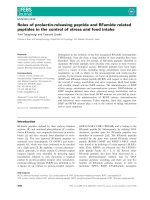

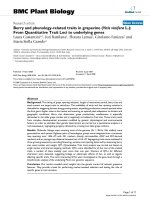
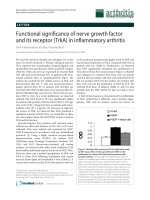
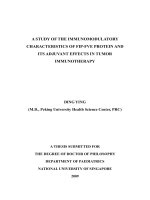

![Mapping of quantitative trait loci (QTLS) associated with sugarcane aphids resistance in recombinant inbreed population of sorghum [Sorghum bicolor (L.) Moench]](https://media.store123doc.com/images/document/2020_01/09/medium_jrk1578566578.jpg)
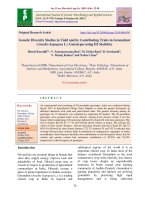
![Development of an in vitro regeneration system in Sorghum [Sorghum bicolor (L.) Moench] using root transverse thin cell layers (tTCLs)](https://media.store123doc.com/images/document/2020_01/09/medium_nfv1578574721.jpg)
